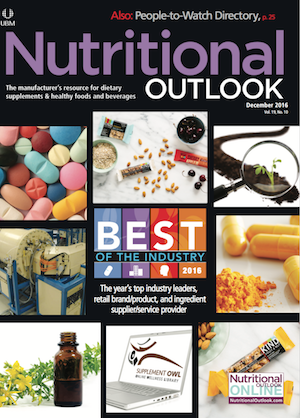Energy Drink Trends: Less Sugar, Clean Label, Natural, and More
Energy drink makers must keep up with today’s consumer trends, including clean-label and healthy.

The energy drink of today is a healthier, more mature version of its younger self. Just take a look at how the market has changed.
For one, the market is less diversified than it once was. As mainstream soft drink companies moved in with global brands, the number of players in the energy drink space has shrunk considerably, and the number of global new product launches recorded by Innova Market Insights has fallen consistently over the past five years. Whereas energy drinks accounted for 5% of global soft drink launches in June 2010–2011, energy drinks accounted for just 3.2% of soft drink launches in June 2015–2016. Launch activity remains slightly higher in the U.S., where 4.25% of soft drinks introduced in 2015–2016 were energy drinks.
In order to capture new consumers and retain existing customers, energy drink leaders like Red Bull, Monster, and Rockstar are addressing some of the biggest topline consumer trends today, such as zero-calorie, reduced-sugar, and clean-label.
Companies are also focusing heavily on adding new drink formats and flavors, sometimes with limited or seasonal editions. Recent launches from major players include a new Citron flavor added to the Monster Energy Ultra zero-calorie/zero-sugar line, and a Killer Citrus product in the Rockstar Revolt portfolio. There is also interest in marketing energy drinks that offer the consumer additional health benefits.
Reduced Sugar
As global concerns over high sugar consumption grow, energy drink makers have introduced more reduced-sugar and sugar-free options. Most of the leading players have at least one zero-sugar or zero-calorie product line within their portfolio.
Based on the U.S. energy drinks launches Innova Market Insights recorded in June 2015–2016, 21% of launches featured sugar-free claims (and up to 29% if low-sugar and no-added-sugar claims are also included).
Clean Label
Interest in clean labeling has also grown in recent years. Over one-fifth of energy drinks launches we tracked featured claims related to “naturalness” and/or freedom from additives/preservatives; if organic claims are also included, that percentage rises to nearly 30%.
Natural Ingredients
The use of natural ingredients is also increasing, including options like honey, green tea, and green coffee bean extracts, as well as the traditional favorite, guarana.
The Starbucks Refreshers energy drink line has traditionally featured caffeine from green coffee beans. In 2016, the company extended the brand with two new lines featuring coconut water, an on-trend ingredient with natural isotonic properties.
The Rocky Mountain High energy drinks brand celebrates a more unusual ingredient in energy drinks-hemp. The company recently extended this product line with a Mango flavor, complete with a low-calorie positioning at just 15 calories per can.
Tea
Consumers are also increasingly interested in the energy benefits other types of drinks offer, evidenced by the claims marketers now make related to energy/alertness. Take tea. After energy drinks themselves, iced tea products feature the most energy-related claims, with 13% of launches using this type of positioning.
In the tea category, an interesting launch in the first half of 2016 was PepsiCo’s extension of its Brisk iced tea brand with Brisk Maté Energizing Iced Tea. This on-trend beverage combines Brisk iced tea and the energizing South American plant yerba maté. Another tea brand, the bottled-tea brand Ecoteas, also focused on yerba maté and at around the same time introduced Yerba Maté Lemongrass, Mint, and Hibiscus teas.
Juice
Juice drinks are also increasingly making energy claims. Campbell’s V8+ Energy range, for example, focuses on both the fruit and vegetable juice content and the added energy from green tea leaves. The range was extended in early 2016 with three lightly carbonated versions: Blackberry & Cranberry, White Grape & Raspberry, and Orange & Pineapple.
Blurring of Sports, Energy
Within the sports-performance sector, sports and energy products traditionally fulfilled different needs. Today, however, the two categories are now blurring and increasingly compete, particularly as products take a more lifestyle-type positioning, offering convenient refreshment and functionality “on the go.”
The market has opened up whole new areas of opportunity and a focus on other aspects of health, targeting an increasing range of consumers and usage occasions.
Innova Market Insights is your source for new-product data. The Innova Database (www.innovadatabase.com) is the product of choice for the whole product-development team, offering excellent product pictures, search possibilities, and analysis. See what food manufacturers are doing around the world: track trends, competitors, ingredients, and flavors. In today’s fast-moving environment, this is a resource you cannot afford to be without.
Also read:
Energy Drink Launches Surge in 2015
Energy Drink Makers Turn to Natural Botanical Ingredients
Which Flavors Are Trending in Energy Drinks?

Prinova acquires Aplinova to further increase its footprint in Latin America
April 7th 2025Prinova has recently announced the acquisition of Brazilian ingredients distributor Aplinova, which is a provider of specialty ingredients for a range of market segments that include food, beverage, supplements, and personal care.






















